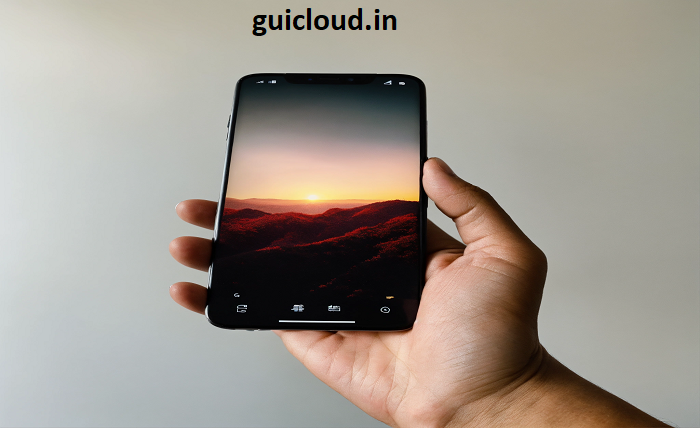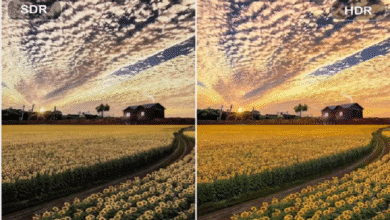Google Photos vs iCloud: Which Photo Storage Platform Is Best for You?

When it comes to storing and organizing your precious memories, choosing between Google Photos vs iCloud can feel like a tough decision. Both platforms offer robust cloud-based storage, advanced organization tools, and seamless sharing features, but they cater to different users based on their device ecosystems, storage requirements, and personal preferences. In this guide, we’ll explore the key differences between Google Photos vs iCloud, breaking down their features, pricing, and more to help you choose the right option for your needs.
1. Overview: Google Photos vs iCloud
At first glance, Google Photos vs iCloud seem to offer similar services: cloud-based photo storage that allows users to back up, organize, and share their images. However, there are some significant differences between the two. Google Photos is a platform-independent service accessible to both Android and iOS users, whereas iCloud is designed primarily for users within the Apple ecosystem. Understanding these fundamental distinctions is the first step in deciding which platform is best suited for you.
2. Storage Options in Google Photos vs iCloud
One of the most crucial aspects of choosing between Google Photos and iCloud is the storage capacity and flexibility they offer. Google Photos provides users with 15 GB of free storage, shared across Google Drive and Gmail, and offers paid plans for those who need additional space. On the other hand, iCloud starts with 5 GB of free storage, which may quickly fill up if you use multiple Apple services. iCloud users can also upgrade to paid plans, but overall, Google Photos provides more free storage upfront, which may be appealing to casual users.
3. Backup and Syncing: Google Photos vs iCloud
Both Google Photos vs iCloud offer automatic backup features, but they operate slightly differently. Google Photos automatically backs up your photos across all devices connected to your Google account, making it an excellent choice for those who use multiple devices across different platforms. iCloud, on the other hand, seamlessly integrates with Apple devices, offering automatic backup for your iPhone, iPad, and Mac, but it doesn’t work as smoothly with non-Apple devices. For users deeply embedded in the Apple ecosystem, iCloud provides a more integrated experience, while Google Photos offers greater flexibility for users who mix devices.
4. Organization and Search Features: Google Photos vs iCloud
When comparing the organization and search capabilities of Google Photos vs iCloud, Google Photos comes out on top thanks to its advanced AI-powered features. Google Photos automatically categorizes your photos by people, places, objects, and events, making it incredibly easy to find specific images. It also offers powerful search functionality, allowing you to type in keywords like “beach” or “birthday” to locate photos in seconds. iCloud offers basic organizational tools like albums and folders, but its search features are not as advanced as those in Google Photos, making it less intuitive for users with large photo libraries.
5. Editing Tools: Google Photos vs iCloud
If photo editing is a priority, both Google Photos vs iCloud offer integrated editing tools. Google Photos provides a range of user-friendly editing features, including filters, cropping, adjustments for brightness and contrast, and auto-enhance options. It also integrates with Google’s Snapseed app for more advanced edits. iCloud, through its Photos app, offers similar basic editing options, and those using an iPhone or iPad with iOS can access additional editing tools like Portrait Mode adjustments and Live Photo effects. While both platforms offer sufficient tools for everyday edits, Google Photos is generally more accessible for users on various platforms.
6. Sharing Features: Google Photos vs iCloud
When it comes to sharing your memories, Google Photos vs iCloud both provide simple and efficient options. Google Photos allows you to share individual photos, albums, or even entire libraries with other users, and recipients don’t need a Google account to view the shared content. iCloud also allows sharing via links or shared albums, but recipients need an Apple ID to access shared photos easily. If you frequently share photos with users across different platforms, Google Photos offers a more seamless experience, while iCloud works best when sharing with other Apple users.
7. Pricing and Plans: Google Photos vs iCloud
For many users, the decision between Google Photos vs iCloud may come down to cost. Google Photos offers 15 GB of free storage, with paid plans starting at $1.99 per month for 100 GB. It also offers higher-tier plans like 200 GB for $2.99/month and 2 TB for $9.99/month. iCloud, on the other hand, starts with just 5 GB of free storage, which fills up quickly for most users. Paid iCloud plans start at $0.99/month for 50 GB, $2.99/month for 200 GB, and $9.99/month for 2 TB. In terms of value, Google Photos provides more free storage, while iCloud offers competitive pricing for those already using multiple Apple services.
8. Device Compatibility: Google Photos vs iCloud
Another major consideration in the Google Photos vs iCloud debate is device compatibility. Google Photos works seamlessly on Android and iOS devices, as well as on Windows and macOS computers. This cross-platform compatibility makes it an excellent choice for users who have a mix of devices from different manufacturers. iCloud, however, is designed primarily for Apple devices, and while it can be accessed on Windows PCs and Android devices through a web browser, the experience is not as smooth or integrated as it is on Apple devices. For users who own only Apple products, iCloud may provide a more cohesive experience, but Google Photos offers greater flexibility.
9. Security and Privacy: Google Photos vs iCloud
When choosing between Google Photos vs iCloud, security and privacy are critical factors to consider. Google Photos uses Google’s security infrastructure, which includes encryption both in transit and at rest, along with two-factor authentication. However, some users may have concerns about Google’s data collection policies. iCloud also offers strong encryption and two-factor authentication, but Apple’s reputation for prioritizing user privacy gives it an edge in this category. If privacy is a top concern, iCloud may offer more peace of mind, though Google Photos still provides robust security measures.
10. Making the Right Choice: Google Photos vs iCloud
Ultimately, the choice between Google Photos vs iCloud comes down to your specific needs, preferences, and device ecosystem. If you’re deeply integrated into the Apple ecosystem, iCloud offers seamless synchronization across your devices, making it a more convenient option. On the other hand, if you need a flexible solution that works across multiple platforms or offers more free storage, Google Photos is the better option. Both platforms have their strengths, so consider your storage needs, sharing preferences, and budget before making a decision.
Conclusion
In the battle of Google Photos vs iCloud, both platforms offer excellent cloud storage options for your photos, but they cater to different types of users. Google Photos stands out for its cross-platform compatibility, AI-powered organization, and generous free storage, making it ideal for users who use a mix of devices or need more flexible access to their photos. iCloud, on the other hand, excels within the Apple ecosystem, offering smooth integration and strong privacy features, making it the best choice for those who rely heavily on Apple products. By evaluating the differences in storage, pricing, compatibility, and security, you can confidently choose between Google Photos vs iCloud based on your unique needs.
FAQ
1. Which offers more free storage, Google Photos or iCloud?
Google Photos offers 15 GB of free storage shared across Google services, while iCloud only provides 5 GB of free storage. Google Photos offers more free storage upfront.
2. Can I use Google Photos on Apple devices?
Yes, Google Photos is available on iOS devices, allowing Apple users to back up and manage their photos easily. It also works on Android and desktop platforms.
3. Is iCloud better for privacy than Google Photos?
Both Google Photos vs iCloud offer robust security, but iCloud is often considered more privacy-focused due to Apple’s strict data privacy policies.
4. Which platform is better for sharing photos?
Google Photos is more flexible for sharing with users across different platforms, while iCloud is more streamlined for sharing photos within the Apple ecosystem.
5. Do Google Photos and iCloud have editing tools?
Yes, both Google Photos vs iCloud offer integrated photo editing tools. Google Photos offers basic editing and integrates with Snapseed for advanced editing, while iCloud provides built-in editing tools within the Photos app.




